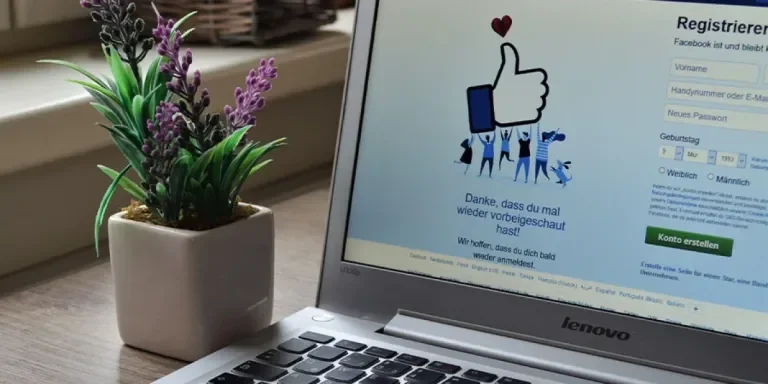With over 2.9 billion monthly active users, Facebook is one of the easiest ways to reach global audiences. That’s why Facebook Marketplace also presents a compelling e-commerce opportunity for dropshipping businesses.
While Facebook Marketplace initially started as a place to trade in pre-owned household items, it has evolved into a massive social market. These days, buyers go to the platform to seek products of all kinds at competitive rates.
And considering the relatively low dropshipping competition on the website, it’s understandable why sellers view Facebook Marketplace as a great way to sell online.
This guide explains the advantage that Facebook Marketplace dropshipping represents and how to start a profitable business on the platform.
Table of Contents
What is Facebook Marketplace?
Why dropship on Facebook Marketplace?
Facebook Marketplace dropshipping requirements
How to start dropshipping on Facebook Marketplace
Tips to succeed in Facebook Marketplace dropshipping
What is Facebook Marketplace?
Facebook Marketplace is a mammoth yet relatively unexplored social marketplace. The platform began in 2016 as a response to the rising commercial activity on Facebook.
Facebook initially launched in 2004 as a purely social network. But as Facebook users began to share product resources with friends and e-commerce businesses began posting goods on the network, Facebook launched a new marketplace to offer a better and safer way to sell.
Even with its late addition to Facebook’s services, Facebook Marketplace has grown massively. Statista reports that the platform registered over 1 billion monthly global users in 2021, up from 800 million a month in 2020. That traffic has also led to serious business for merchants on the platform who made gross revenues of $26 billion in 2021, a 48% increase from 2020.
And that’s why dropshippers are warming up to the business opportunities available with Facebook Marketplace dropshipping.
Why dropship on Facebook Marketplace?

Dropshipping is a business model that thrives on volume, which is why Facebook Marketplace dropshipping makes so much sense. With dropshipping, sellers don’t hold inventory. Instead, they rely on third-party suppliers to fulfill buyer orders while they enjoy a small markup.
The profits on individual sales may not be attractive. But spread out over numerous orders, those sums can become substantial, leading to a lucrative dropshipping business. Facebook Marketplace can potentially supply that volume, and that’s why it’s a hot dropship market. Likewise, a Facebook Marketplace dropshipping business provides the following benefits:
- Seamless buyer communication: Sellers can respond to buyer requests and messages in real-time with Facebook Messenger.
- Low dropshipping competition: Compared to platforms like eBay and Amazon, Facebook Marketplace is relatively new and has lower competition.
- Straightforward process: Creating a dropshipping store on Facebook Marketplace is seamless and stress-free.
- Low transaction fees: Product listings by individuals are entirely free. Likewise, merchants with sales below $500 do not have to pay transaction fees.
Facebook Marketplace dropshipping requirements
Before opening an online store on Facebook Marketplace, sellers should know what it’s like to sell on the platform. While Facebook doesn’t have any real restrictions to dropship products on the marketplace, there are other applicable limitations.
- Selling limits: While sellers can sell most products on Facebook Marketplace, non-US citizens have a selling limit of $500. Likewise, sellers are required to list a US bank account or an alternative payment service like Payoneer to be able to receive payments.
- Listing limits: There are two key limits to listing on Facebook Marketplace. First, only sellers based in the United States can enjoy full product listing features if they use Facebook’s Listing partners (WooCommerce or Shopify). Second, product listings are geographically restricted. For instance, product listings for a seller based in California will be visible to only potential buyers within 100 miles of their location.
- Shipping limitations: Items bought on the platform must be shipped within 2-3 days. But there are also limits to shipping and checkout availability for specific products.
- Transaction fees: Facebook Marketplace is free for individual listings. But merchant listings above $500 attract a minimum $0.40 or 5% transaction fee.
How to start dropshipping on Facebook Marketplace
With the preliminaries done, here’s how to set up an online business and list products on Facebook Marketplace.
Step 1: Create a Facebook Page
Sellers based in the US can create a Facebook Page for their marketplace product listings. But those outside the US may only be able to start with a personal Facebook account.
Having a Facebook Page is more professional and evokes greater buyer trust. But that’s not to say sellers cannot create a great business off a personal Facebook account. So, see if you can create a Facebook Page, and if that’s not possible, these steps will still be helpful.
Step 2: Pick preferred products
The next step is to conduct product research to determine the best items to sell. There are various ways to go about this. Begin by searching out the most popular products offered on Facebook Marketplace.
Next, determine if these are products that fall within your budget and aspirations for your online store. Remember that you would likely need to buy the goods from your dropship supplier before delivery to your customer. So be certain you have enough capital to meet this expense.
Consider the most beneficial places to source those products. Online marketplaces like Alibaba.com and AliExpress are a good idea because they let you buy quality goods at wholesale prices. Here’s a comprehensive guide that explains how to buy dropship goods on Alibaba.com.
Learn how those items are priced from suppliers on these websites and the potential profit margins on various items.
Step 3: Curate a product catalog

You know what items sell best on Facebook Marketplace and where to find them. The next step will be to create a catalog of products for sale on the platform.
Remember to select this product catalog based on buyer demand, profit margins, and dropship potential. In addition, your preferred supplier should be able to offer multiple shipping options that align with Facebook’s 2-3-day shipping policy.
Step 4: Write effective product descriptions
An effective product description consists of attractive copy and optimized content. For copy to be attractive, it should capture a buyer’s viewpoint. Speak about benefits and highlight features that will meet buyer needs or interests.
To create optimized product descriptions, implement search engine optimization (SEO) in product copy. Identify the terms buyers use to search for those products and strategically insert them in the product description.
Step 5: List products
Sellers based in the US can list products using a Facebook listing partner. This is faster and allows them to enjoy more inclusive features. But non-US sellers can still list manually, upload product images, and create copy.
In any case, some experts suggest that it’s a good idea to list products manually at the start to gain deeper insight into the process and how it works.
Tips to succeed in Facebook Marketplace dropshipping
Since it’s relatively new, Facebook Marketplace holds a lot of potential for creative sellers. Here are a few tips to unlock some of that potential.
- Use a dropshipping management tool: Dropshipping management tools such as Oberlo and Salehoo can further ease starting and maintaining an online store. They automate the process of product listing, order management, fulfillment, etc.
- Complete listing information: Facebook Marketplace listings include detailed information that helps buyers choose. Be sure to complete all fields so buyers get the best information possible when considering your store.
- Refresh product listings: Resist the urge to “set and forget” product listings. Always return to refresh store listings to keep them current and visible to buyers. Refresh listings by clicking on “My Account” in Facebook Marketplace and accessing the listings.
- Advertise creatively: Sellers can take out social ads on Facebook or even YouTube to promote their listings. Another effective and potentially cheaper way to advertise is to market products in Facebook Groups and local communities. Creating engagement with followers on other social media platforms like Twitter, Instagram, and Quora can also help funnel buyers to your store.
- Leveraging a product niche: Niches create a distinct advantage for sellers. They help create a name in a specific area. Buyers are more likely to trust a seller with a confirmed track record and a reputation.
Conclusion
Facebook Marketplace represents a new frontier for dropshipping businesses, and exploiting this frontier can be the key to e-commerce success. Employ the tips and steps shared in this article to open and grow a lucrative Facebook Marketplace store.




